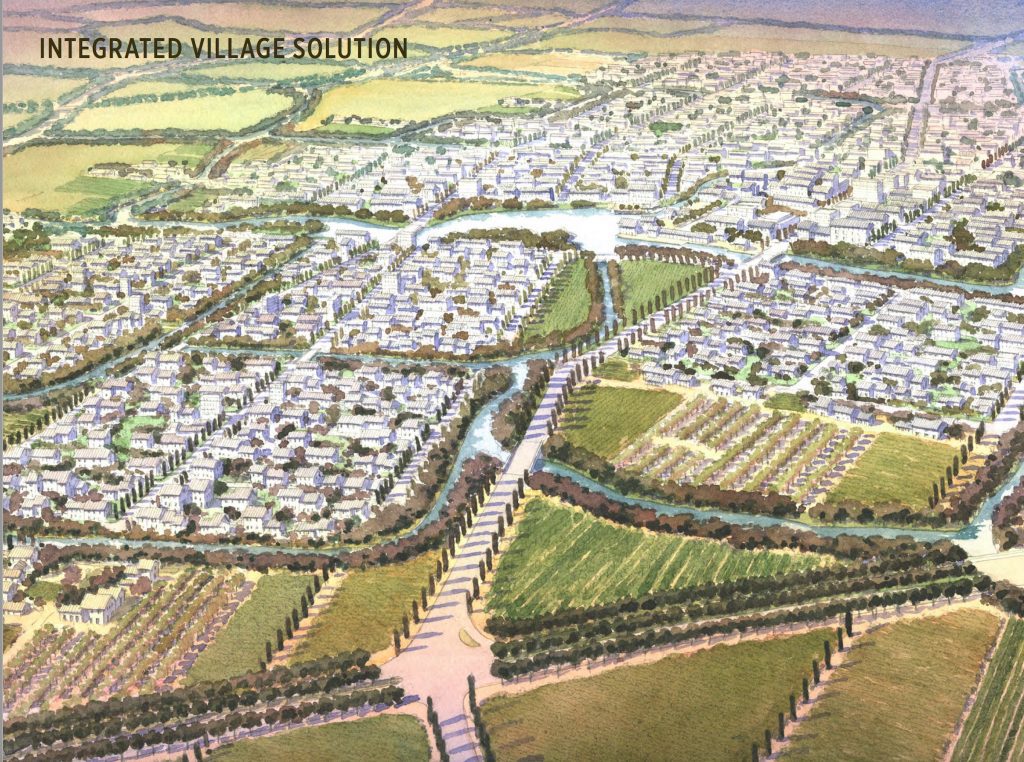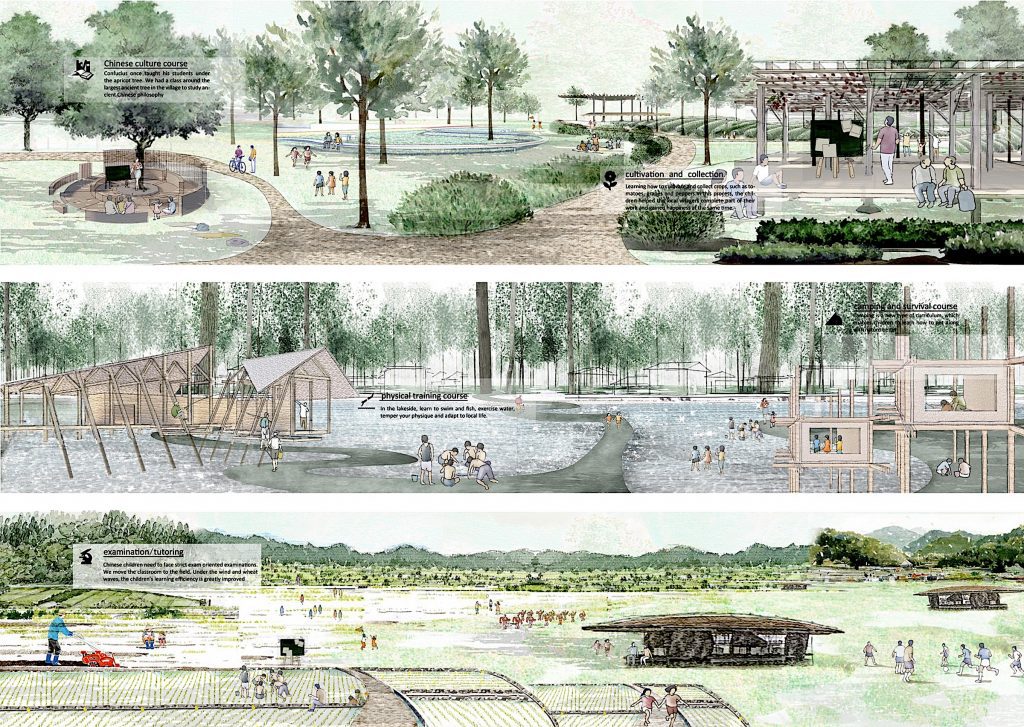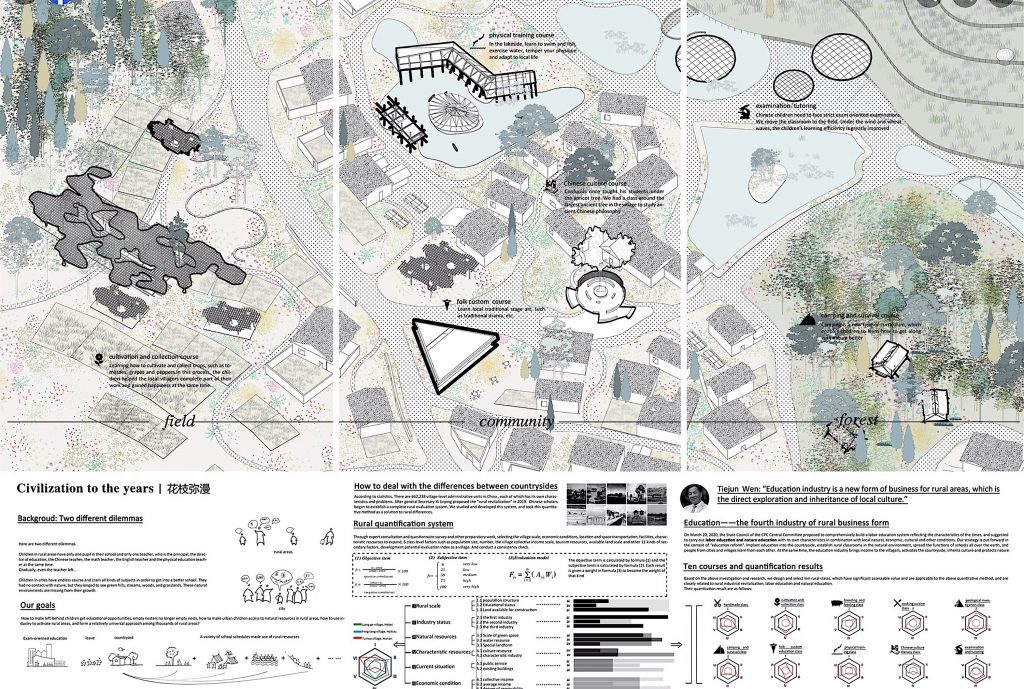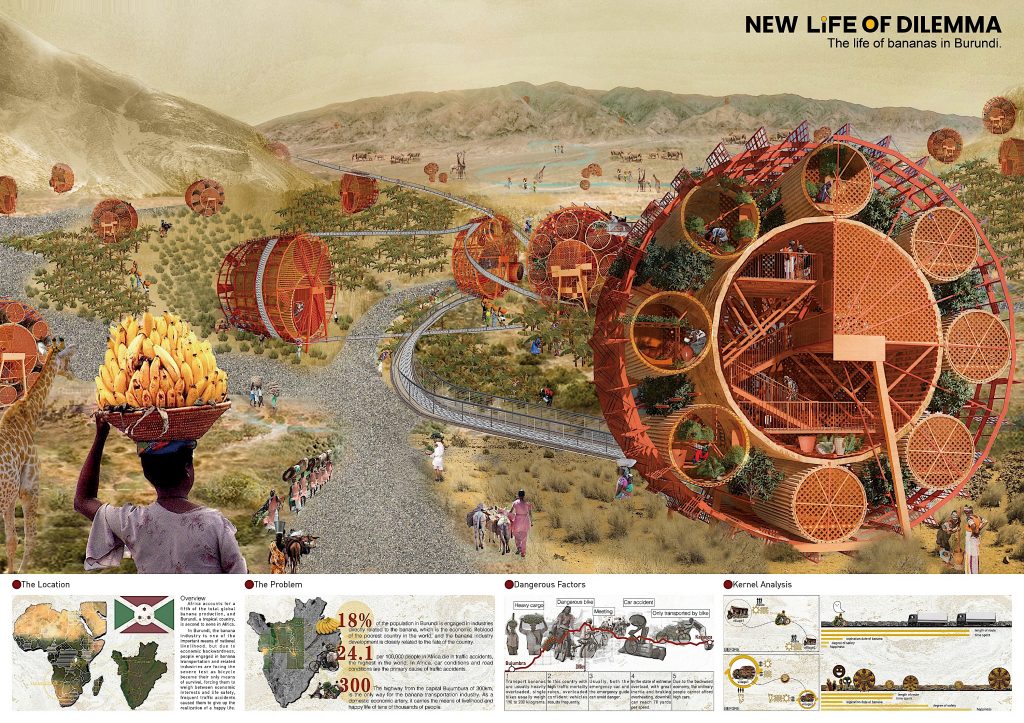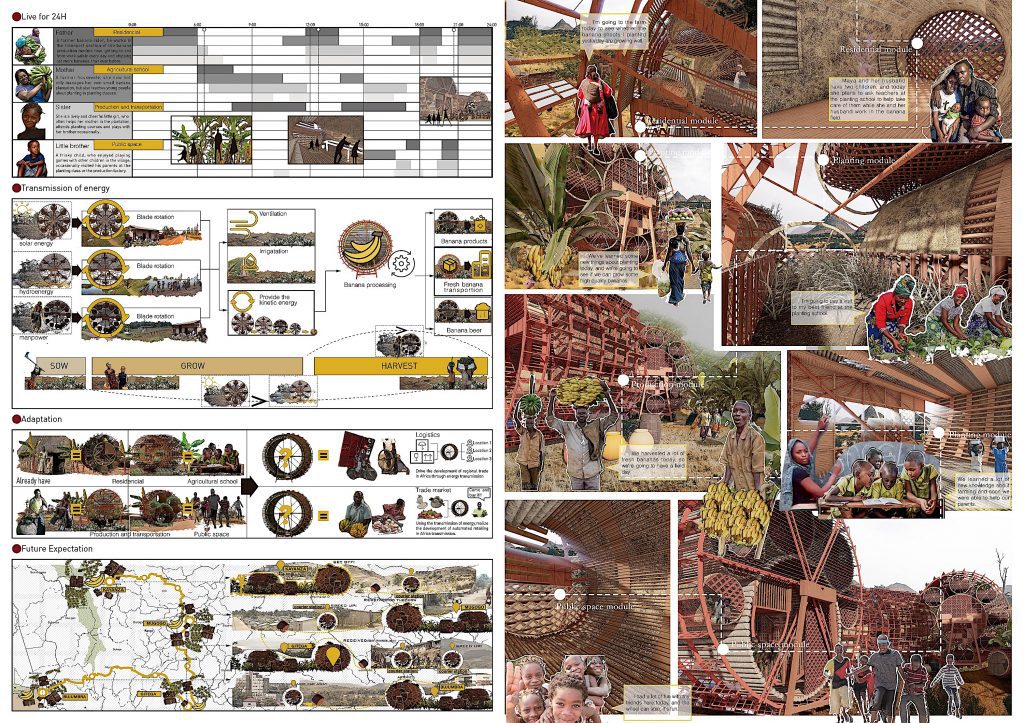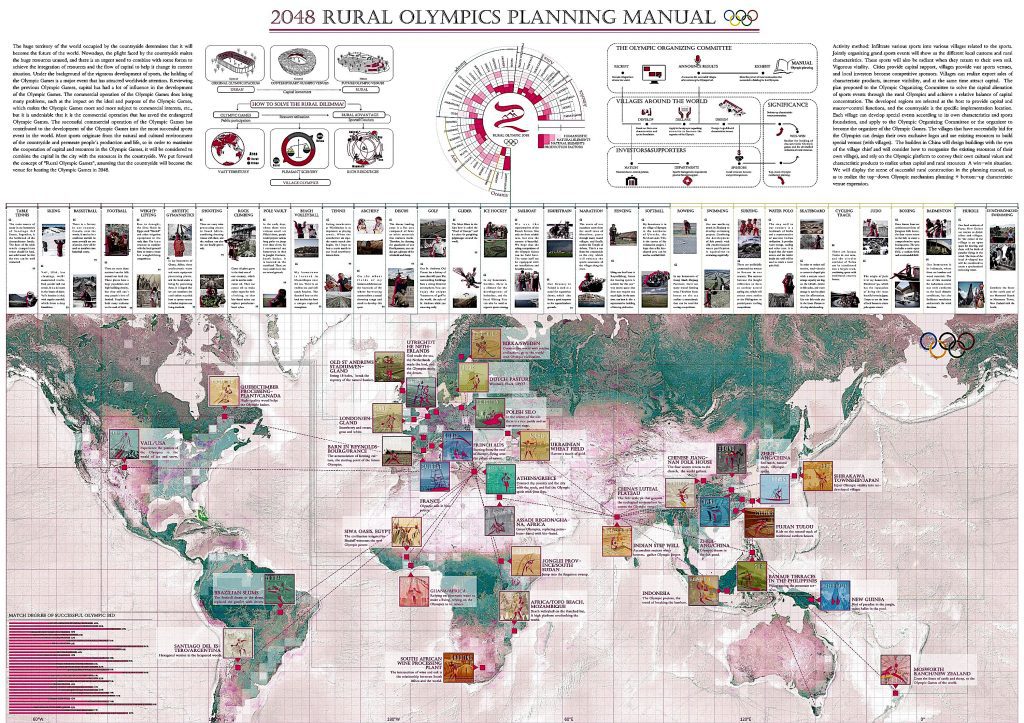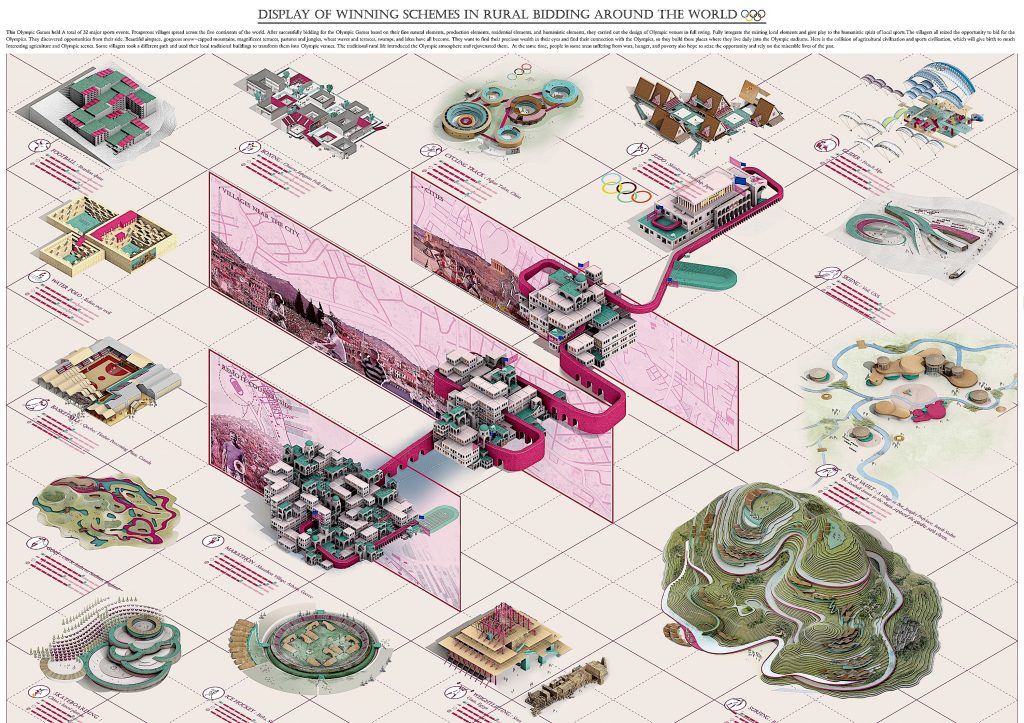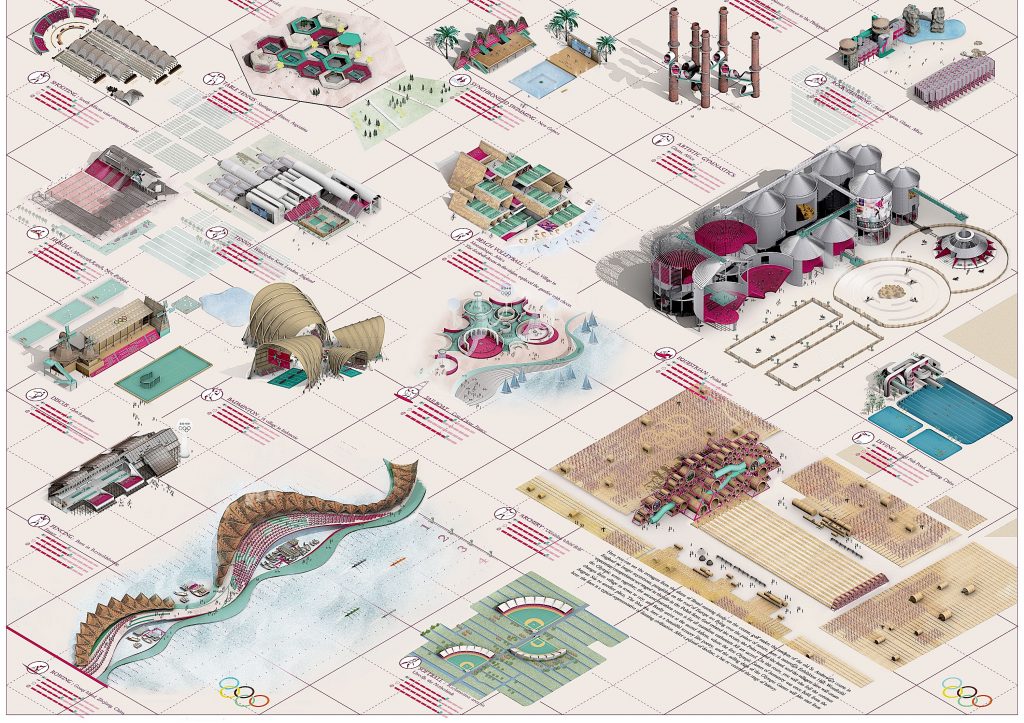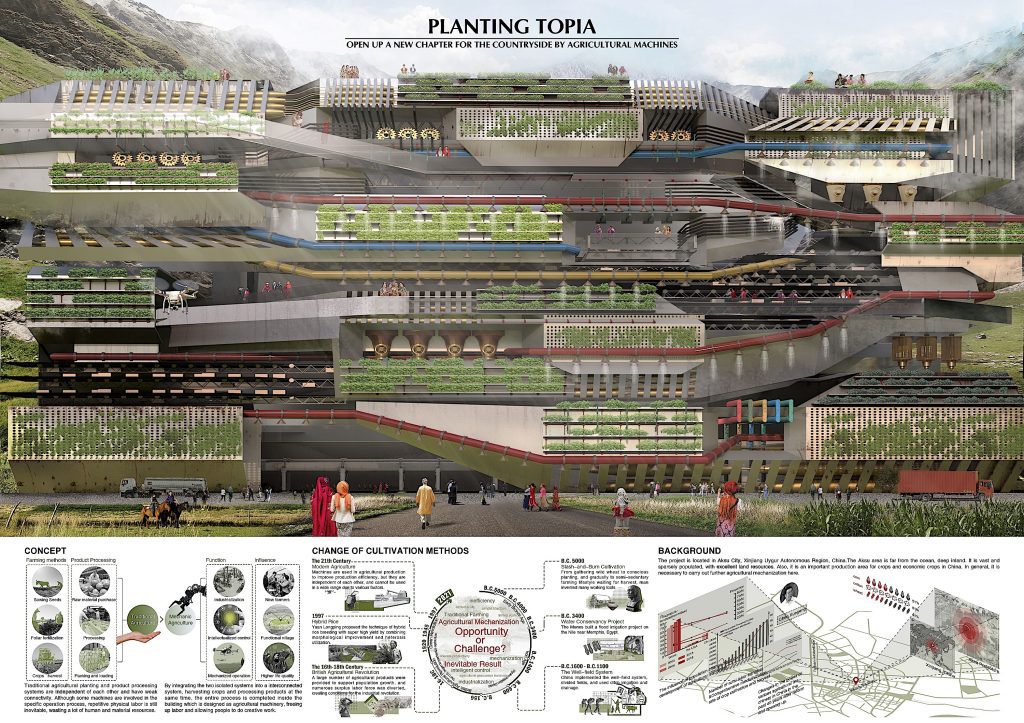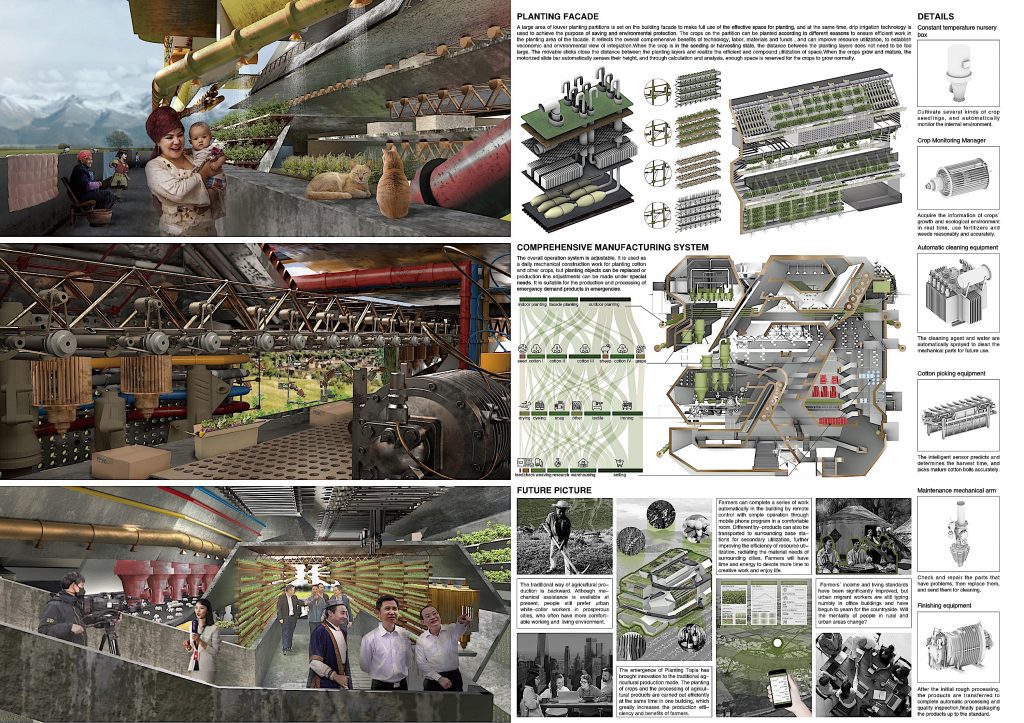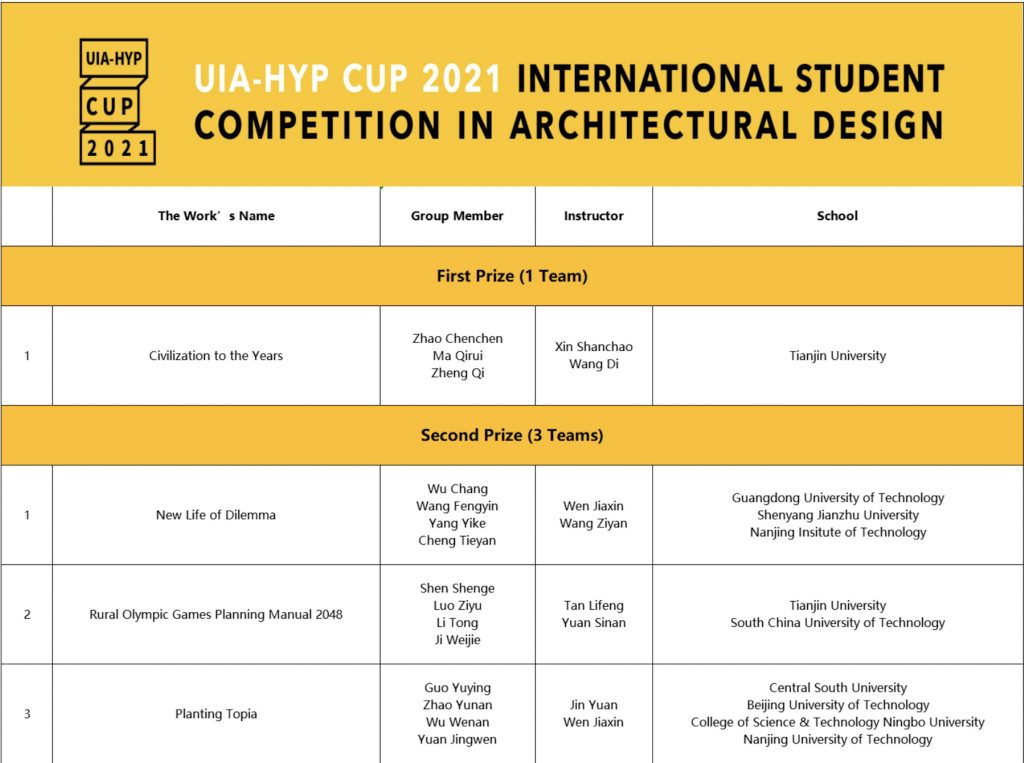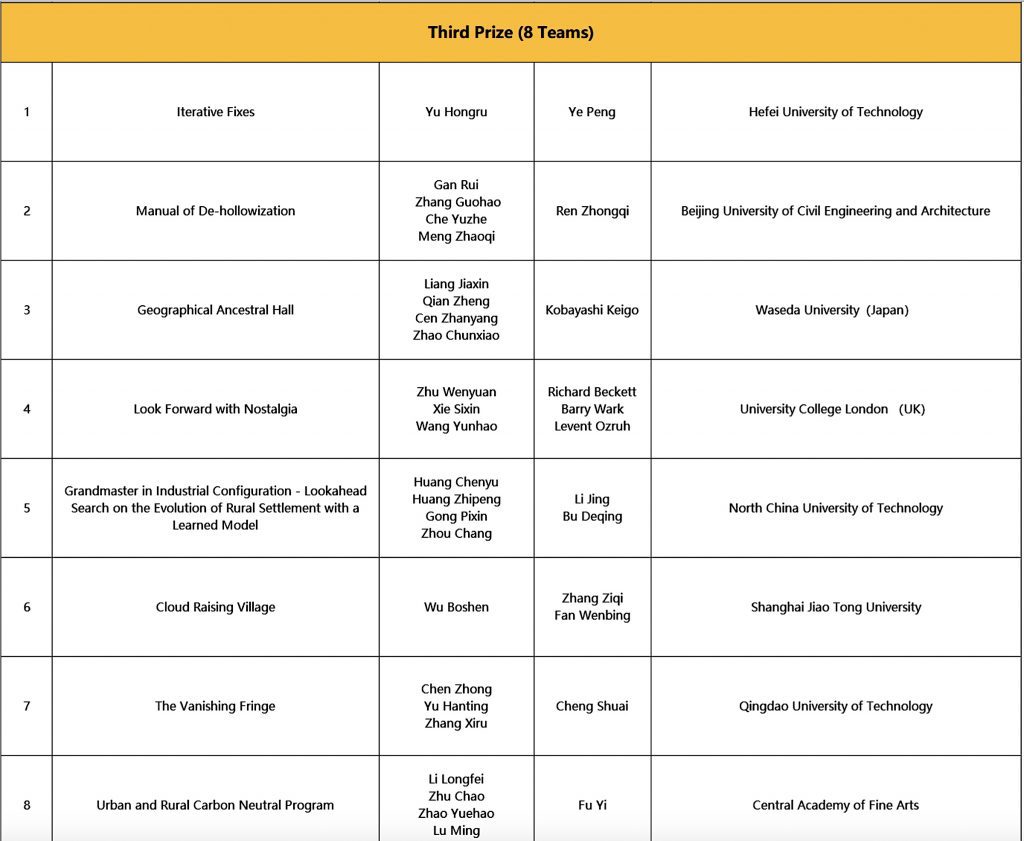Countryside Dilemmas – New Rural Planning

1st Place – ©Tianjin University Team
Planning used to be at the bottom of Chinese students’ lists of design priorities. One western architect, whose firm was at the forefront in the design and implementation of numerous planning projects in China, surmised that planning was an area that received little attention in the university curricula. So when planning for a major metropolitan area has occurred, the Chinese have almost always turned to outside international firms for ideas and implementation.
There have been planning projects for rural projects, most notably SOM’s Nanhu Village (2012), an agricultural settlement the result of the government’s new reform policy for the country’s agricultural sector. Led by SOM architect, Ellen Lou, Urban Design + Planning Group for SOM’s San Francisco office, this project can be characterized as a satellite city in the sense that it has easy access to a major metropolitan area. In this case, placing agriculture in the forefront was relatively new.
But change has been in the air. Chinese publications such as Urban Environmental Design magazine are notable for staging ideas competitions dealing with some of the country’s most pressing urgent issues in the area of urban expansion. In the case of the UIA-HYP Cup 2021 student competition, here the focus was more on those areas more remote from urban centers, villages where depopulation is the norm, in the absence of business and cultural institutions.Thus, the theme of this competition, “Countryside Dilemmas – New Rural Planning,” changes the focus from satellite cities to rural planning.
The competition brief asked for the following:
“The countryside fundamentally challenges the paradigm of the architectural profession by requiring a more deeply ingrained role compared to being a city’s service provider. There might be no such thing as architecture-related information to fall back on. The rural context requires a skills set where economy, infrastructure, new and old technology, and culture have to work in unison in order to generate new experiences. Solely mastering old arts and crafts will not result in the components needed to facilitate progress.
Work in the countryside also challenges the notion of fixed construction plans. As many of the issues in the countryside are not exclusively solvable by construction alone, it must build more on an effective combination and spatial translation of new ideas, desires, methods and reference points rather than the orthodoxies of traditional planning. Within this context, the burning of Wongding, and all its cousins around the globe, should lead to a broader rejuvenation of the village in a new and striking 21st century way of rethinking planning, heritage, beauty, value, economy, development, and purpose.”
The competition jury was made up of 13 members, four of which were international:
• Koolhaas, Rem, Founder of OMA/AMO (Jury Chairman)
• CUI, Kai, Academician of the Chinese Academy of Engineering
• ZHANG, Li , Dean of School of Architecture, Tsinghaa University
• Li, Zhenyu, Dean, College of Architecture and Urban Planning, Tongji University
• ZHANG, Tong, Dean, School of Architecture, Southeast University
• KONG, Yuhang, Dean, School of Architecture, Tianjin University
• SUN, Yimin, Dean, School of Architecture, South China University of Technology
• LV, Pinjing, Director of the Architectural Art Committee, China Artists Association
• PENG, Lixiao, Chief Editor, Urban Environment Design
• GONG, Jun, Chairman of the Board and General Manager of HYP-ARCH
• RUSSELL, Peter, Former Dean of Faculty of Architecture, Delft University of Technology
• CAMPBELL-LANGE, Barbara, Deputy Director, Professor at Bartlett School of Architecture, London
• GUALLART, Vincente, Founder, Institute of Advanced Architecture in Catalunya (IAAC), Former Chief Architect, City of Barcelona
Note: Since this competition had the support of the UIA, it was logical that outside, international architects be included on the jury panel.
The jury considered the entries by Zoom and finally onsite in China. Their final adjudication of the designs was as follows:
1st Prize – Zhao Chenchen, Ma Qirui and Zheng Qi with instructors Xin Shanchan and WangDi, Tianjin University
2nd Prizes (3)
–Team from Guangdong University of Technology; Shenyang Jianzhu University, and Nanjing Institute of Technology;
– Team from Tianjin University and South China University of Technology;
– Team from Central South University; Beijing University of Technology; College of Science & Technology Ningbo University: and Nanjing University of Technology
3rd Prizes (8 teams)
Two of the eight teams were international, one from Japan, the other from the U.K.
Note: For team members, please refer to the list below.
1st Place
Civilization to the Years
Tianjin University
Zhao Chenchen
Ma Qirui
Zheng Qi
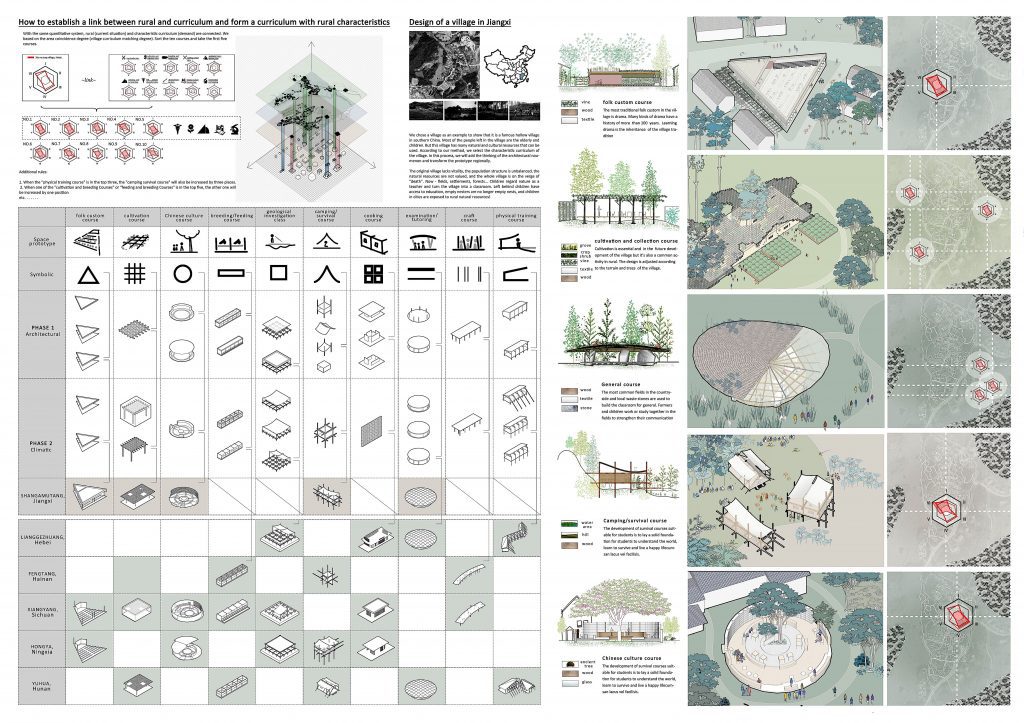
Competition boards ©Tianjin University Team – Zhao Chenchen, Ma Qirui and Zheng Qi
1st Prize Video presentation
Comments
First Prize Work of UIA-HYP Cup 2021 International Student Competition in Architectural Design: Civilization to the Years by ZHAO Chenchen, MA Qirui and ZHENG Qi from School of Architecture, Tianjin University
Civilization to the Years
Design Interpretation: This proposal takes “education industry” as the point of penetration for rural revitalization, aims to take “natural education” as the rural fourth industry, implant education into the countryside, and establish a new rural classroom in the natural environment, so that the functions of schools are scattered all over the earth, and people from cities and villages learn from each other. At the same time, the education industry brings income to the villagers, activates the countryside, inherits culture and protects nature.
In view of the diversity of rural areas, we put forward a set of universal coping strategies – characteristic curriculum. Firstly, it quantitatively evaluates the cultural, natural, industrial conditions and development potential of rural areas. At the same time, ten characteristic course prototypes that can represent the characteristics of rural areas are designed, and the rural quantitative system is used to evaluate these ten courses. By comparing the quantitative results of the two parts, we can get a set of characteristic curriculums most suitable for rural characteristics. Finally, we integrate the rural regional thinking and transform the prototype regionally. These classes not only serve local left behind children, but also attract urban children. The two kinds of children meet in the classroom, and the countryside and the city can complement each other and develop together in a harmonious way.
This design selects an ordinary village in southern China as an example. According to the rural folk culture and natural resources such as farmland, forest, lake and grass, five courses and their architectural forms are designed in detail, and constructed with local materials such as bamboo, wood and stone. Study on the ridge, among the woods, beside the stream… Children take nature as their teacher and the countryside as their classroom. Virtually, the countryside is no longer the supplier of the city. While restoring its vitality, it has also become a unique place for natural education. Rural, like education, can be passed down from generation to generation.
Jury Chairman’s Comment
The idea to combine the rehabilitation of the countryside with the reinvention of education is brilliant. Now that cities and countryside have become almost separate entities, the “exchange” between schools offers new perspectives, that this scheme explores in a creative and sensitive manner.
-Rem Koolhaas
2nd Place (1 of 3)
New Life of Dilemma
Guangdong University of Technology; Shenyang Jianzhu University, and Nanjing Institute of Technology
Images: ©Wu Chang, Wang Fengyin, Yang Yike, Cheng Tieyan
2nd Place (2 of 3)
Rural Olympic Games Planning Manual 2048
Team from Tianjin University and South China University of Technology
Images: ©Zhen Shenge, Luo Ziyu, Li Tong, Ji Weijie
2nd Place (3 of 3)
Planting Topia
Team from Central South University; Beijing University of Technology; College of Science & Technology Ningbo University: and Nanjing University of Technology
Images: ©Guo Yuying, Zhao Yunan, Wu Wenan, Yuan Jingwen



























